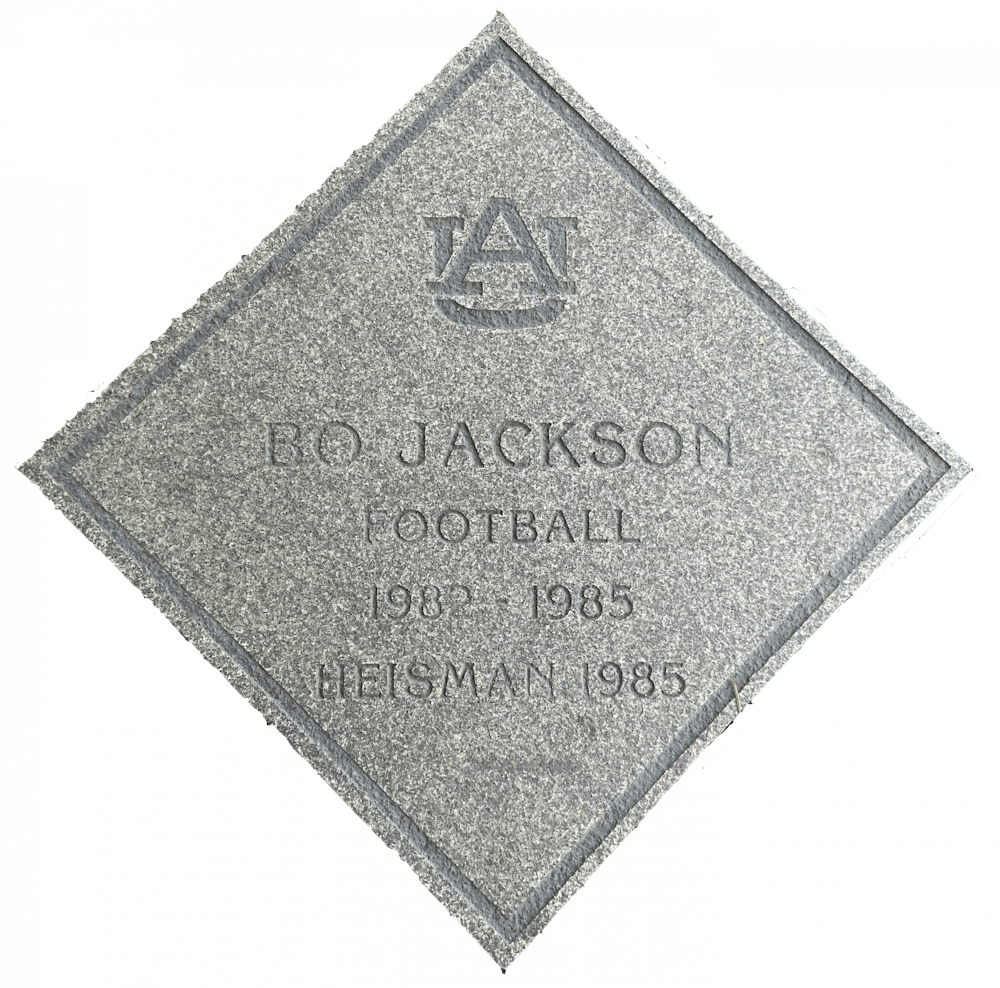The Tiger Trail of Auburn is Auburn’s “walk of fame,” a stretch of sidewalk that owes its existence to the walk of fame 40 years older in Hollywood, California. The names on plaques along the Tiger Trail are both familiar and lesser known, and refer to men and women from close and far. Like Hollywood has their superstars on the silver screen, Auburn has their own on the field, court, pitch, pool and gym.
The Tiger Trail began over two decades ago as a joint venture between the Auburn Chamber of Commerce, Auburn University Athletics and the City of Auburn. The project was started in 1995 as a way to honor Auburn athletes.
“It was primarily made up of a group of men who were retired at the time,” said Mayor Ron Anders, who has been involved with the program for several years in different capacities. “The primary person was Ken Brown.”
Brown was, at that time, retired after a career with Alabama Power and serving on the Auburn City Council, Anders said.
“It was really his brainchild to create a kind of ’Hollywood Walk of Fame’ in downtown Auburn,” Anders said.
Brown’s brainchild soon became reality as the first granite plaques were placed in the concrete in 1995. The inaugural class was large compared to a typical induction class now; 13 former athletes, coaches and administrators were honored, among them football coach Ralph “Shug” Jordan, football and baseball star Bo Jackson and football star Pat Sullivan.
Typically, induction classes consist of roughly five to six members, Anders said, depending on the Chamber of Commerce’s budget for the project for that year — costs of the plaque as well as the induction ceremony must be taken into consideration for each inductee.
So keeping in mind the number of inductees that the budget allows for each year, a process of deciding who will be one of the distinguished few for that year’s induction class begins. That responsibility is left in the hands of a small group of people — the Tiger Trail selection committee.
The group is made up of fewer than 10 individuals from both the private and public sector who serve for a term.
Exactly who is on the selection committee, however, is kept secret. The Auburn Chamber of Commerce doesn’t give out the names of the committee members, said Auburn Chamber of Commerce Vice President of Communications and Marketing Jennifer Fincher.
The group’s privacy is protected to prevent people from lobbying members of the selection committee to induct a certain member of Auburn athletics, Anders said.
“We’ve never wanted the Tiger Trail to be a political process,” Anders said. “We wanted it to be everything but a political process.”
In the past, Anders has served as a member of the selection committee, but is not sure what his level of involvement will be in the future. However, the mayor of Auburn is always involved in the installation ceremony at the least, Anders said.
Bill Ham, who served as mayor until Anders was elected in 2018, helped with the ceremony, as did Mayor Jan Dempsey, Ham’s predecessor.
The committee typically only has two or three meetings per year, at which committee members go through a process of nominating who they feel is representative of Auburn’s history. Committee members then debate and vote according to “their own research, due diligence and experiences,” Anders said.
The candidates who receive the most are then honored in that year’s induction class. A ceremony is held and the selected candidate’s name and accomplishments are immortalized in the sidewalks along College Street and Magnolia Avenue.
While the trail was intended to serve as a unique way to honor Auburn athletes, coaches and administrators, it has also benefited the community in other ways.
“This trail is another reason for people to come to downtown Auburn to shop and be a part of our community either as a visitor, alumni or resident,” Anders said. “It was certainly an economic development, community development mindset behind doing this.”
Over the years, it’s become clear that maintenance is required to keep the plaques in good shape.
“We have not had a Tiger Trail since I’ve become the mayor,” Anders said. “What we’ve done is we’ve had a number of broken stars downtown because of all the construction, and we’ve got some of that construction behind us, so what we’ve tried to do is get some of those plaques replaced, so we’ve been focused on doing that. It’s easier if we don’t add six more to the list.”
However, the tradition is expected to continue in the future.
“We’re certainly planning to continue on with the Tiger Trail here in 2020,” Anders said.
Do you like this story? The Plainsman doesn't accept money from tuition or student fees, and we don't charge a subscription fee. But you can donate to support The Plainsman.

Evan Mealins, senior in philosophy and economics, is the editor-in-chief of The Auburn Plainsman.





